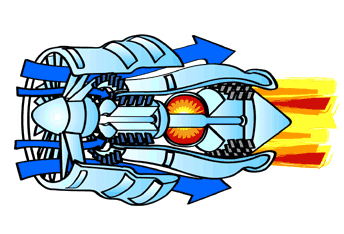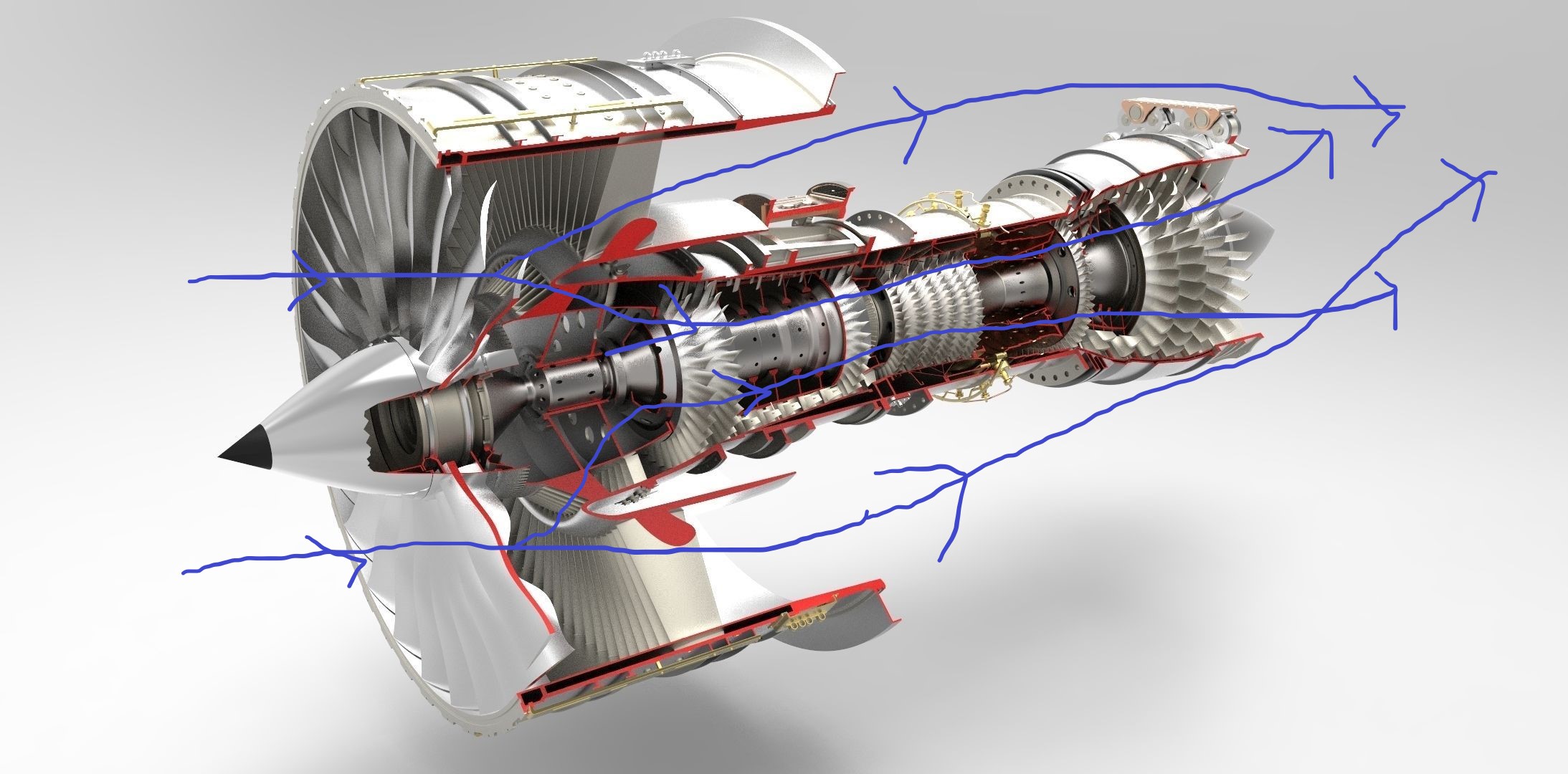Jet Engines
Overview
 Click Me!
Click Me!
Jet engines are a type of reaction engine that push a plane forward using many different parts. They do this by creating thrust using jet propulsion. Examples of jet propulsion are rocket, water jet, and hybrid propulsion. When someone says Jet Engine, they are usually referring to an internal combustion airbreathing jet engine like a turbojet, turbofan, ramjet, or pulse jet. In general, jet engines are internal combustion engines anyway.
In Depth
 Click Me!
Click Me!
All jet engines, being gas turbines, work in the same way. The engine sucks up air from the front with a giant fan. Second, a compressor raises the pressure of the air that was collected. This compressor is made of many blades attached to a shaft. They spin at a high enough speed to compress the air (Squeezing it together). The resulting high pressure air is sprayed with fuel and an electric spark lights this highly flammable mixture. The burning gases expand out and blast through the backside, known as the nozzle. As this gas shoots backwards out, it pushes the aircraft forward. As the hot air is going through the nozzle, it runs into another group of blades that makeup the turbine. It is attached to the same shaft as the compressor and because of this spinning the turbine spins the compressor. The reason this works is because of Isaac Newton's third law of motion, which is that for every action there is an equal and opposite reaction. The air being heated and pushed out the back is the action, the opposite reaction is the aircraft moving forward, since air being pushed one way pushes the aircraft the other way.
How The Parts Work
 Click Me!
Click Me!
The fan sucks in a lot of air, and directs half of it to go through the rest of the engine, and the other half goes out through another duct and is responsible for much of the force that moves a plane forward. This air is also cooler since it didn't go through the engine, and helps keep it quiet. The compressor works by taking in the air from the fan and squeezes it progressively as it gets deeper into the engine, which makes the air pressure going up, significantly increasing its energy potential. This air is forced into the combustion chamber after. The combustor then mixes fuel in with the compressed air, where it catches fire, causing expanding gases to form and go out the back, which is how thrust is generated. The turbine at the end continually powers the compressor with the air the compressor is pushing out since the turbine and compressor are connected to the same shaft.